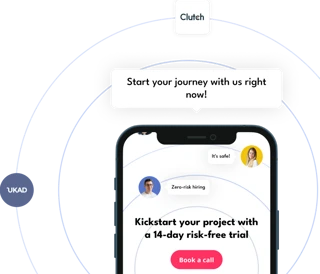Staff augmentation is a practice that can have both benefits and challenges for companies looking to scale their teams effectively. We should understand the pros and cons of increasing staff to better understand its consequences for organizations.
Pros:
Such an engagement model allows you to quickly scale your team up and down to meet the needs of a project or a particular role, depending on the workload.
The company can save money usually spent on hiring full-time employees, especially for short-term projects. Sometimes, such economic benefits are not noticeable when a client hires consultants in the local market. Meanwhile, hiring staffin the Polish or Ukrainian markets can bring significant financial benefits and savings. In this case, labor costs, taxes, and social security benefits account for 40-50% of the cost savings.
- Access to specialized skills:
Expanding your company's staff allows you to hire contractors with unique skills and experience that your team may require. This can save time and effort that would have been spent trying to acquire new skills in-house.
With team augmentation services, you don't have to go through complex recruiting processes that sometimes take several weeks to months. When using the team augmentation approach, the customer can instantly select developers from a pool of consultants ready to start working immediately. By hiring a UKAD employee from the available talent pool, you can be sure they are vetted. Such an advantage allows you to start cooperation quickly within 1-2 weeks. In comparison, classic recruitment is much more time-consuming, including the stages of searching and interviewing. In addition, the transition from one job to another for full-time employees can sometimes take a long time, even up to one month.
Regardless of whether the project requirements have changed or ended, you can continue cooperating with the employee without the legal or financial consequences of dismissing full-time employees.
Cons:
Communication barriers may arise due to cultural and other differences between the internal team and external staff, leading to process delays and frustration.
- Dependence on external resources:
Outsourcing business-critical staff from external vendors can lead to severe risks for the company. That's why balancing the number of internal team members and staffing roles is essential.
New vendors can affect team morale. Proper employee communication about company strategy ensures that in-house employees feel supported and valued.
- Quality of services received:
Contractors need to provide quality performance that meets the client's requirements. To achieve this, it's worthwhile to ensure that the quality standards expected by the client are the same as what the contractor can deliver. This will ensure that the expectations of both parties are aligned, leading to a successful project outcome.





